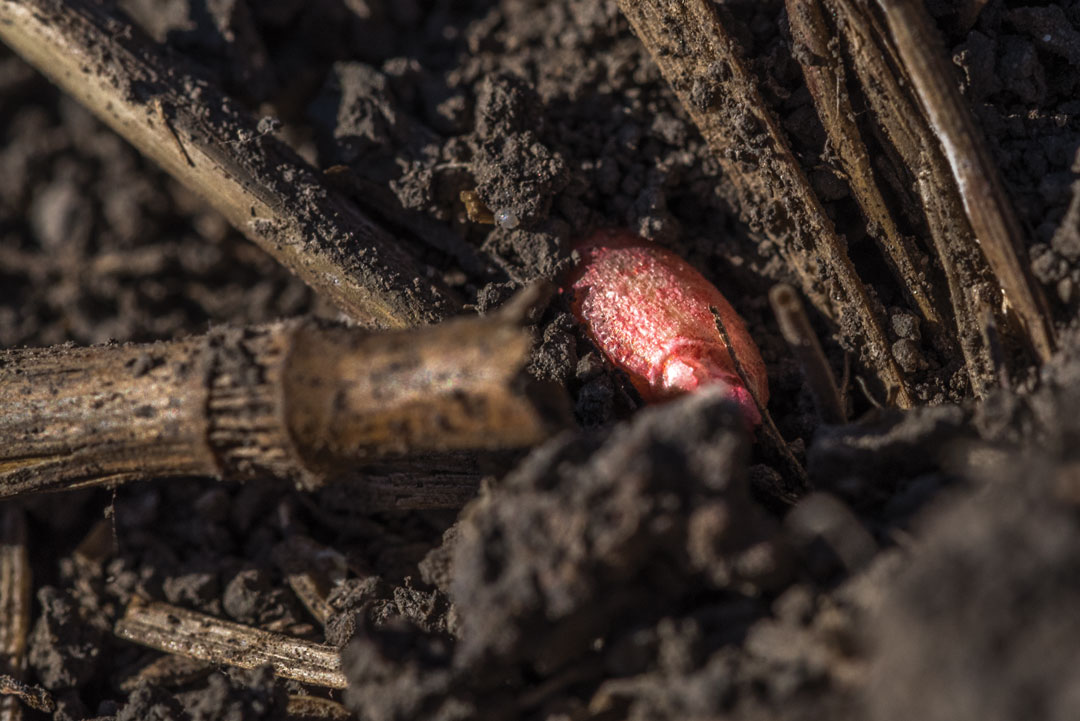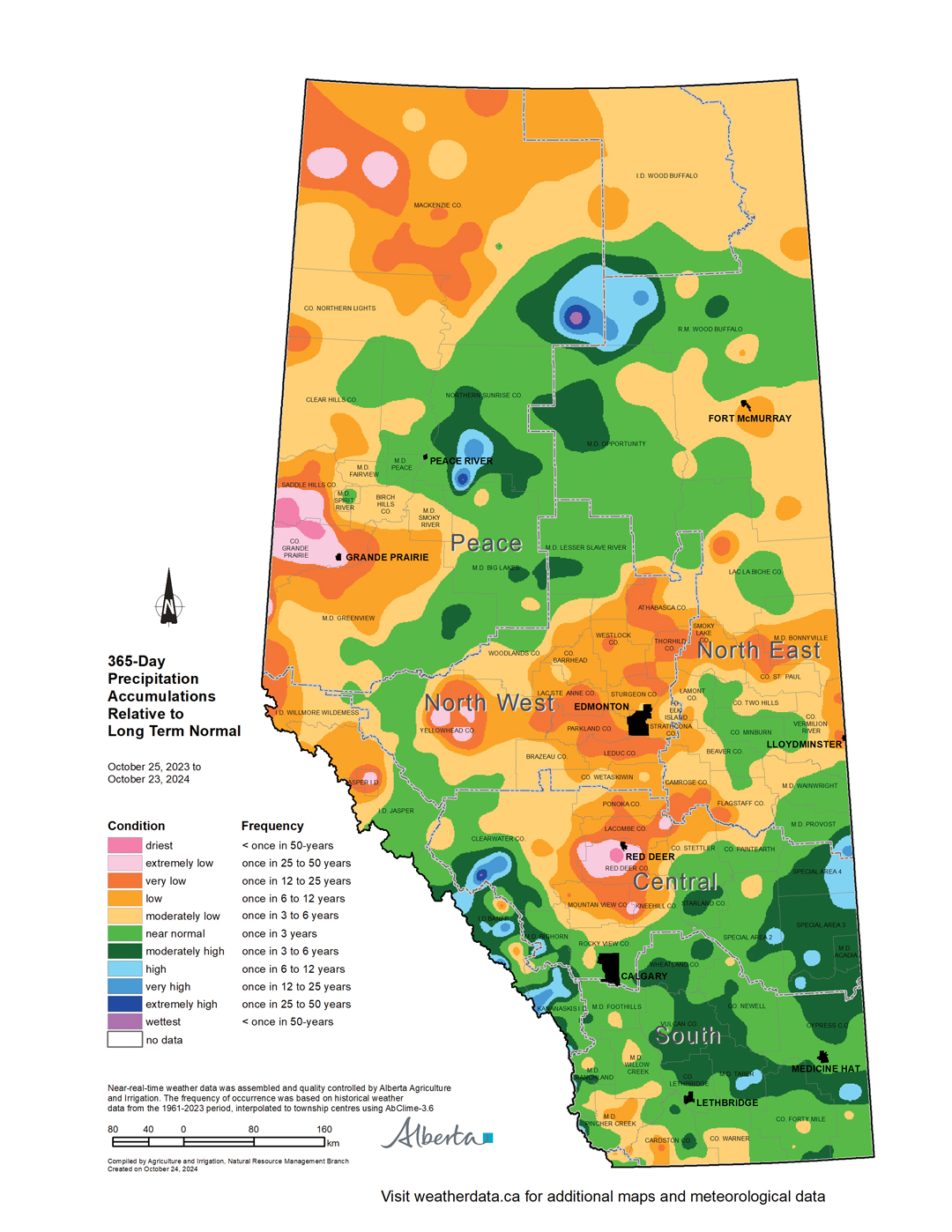SEED SAVVY
TIPS FOR CHOOSING GRAIN VARIETIES
BY ALEXIS KIENLEN
Choosing seed varieties is always a hot topic among farmers, but the central reason for selecting one variety over another is straightforward. “Typically, growers are growing something they can sell,” said Monica Klaas, general manager of Alberta Seed Processors.
Most farmers start by assessing the big picture, refining these money-making choices by examining factors that most notably include the profitability and protein content of various crops within an established rotation regime.
Naturally, farmers also look at disease and insect susceptibility. “If people are in a sawfly area, they will grow something with a sawfly resistance,” said Klaas. “Or, if they have a particular disease concern, they will pick a variety for that.”
Lodging is another concern that varies by region. In black soil zones with high fertility or high moisture, choosing varieties that exhibit good straw strength is important. In drier areas, lodging is not part of the seed-choice equation.
Aiding this selection process, farmers have a lot of choice in what they can grow. There are more than 30 varieties of Hard Red Spring Wheat alone, each with characteristics that tailor it to certain soil zones. “That’s reflected by the seed growers that are growing them and offering them,” said Klaas.
Variety choice is also a discussion between the farmer and the grain buyer, especially when the farmer is pursuing a malt barley contract.
Alberta Seed Processors supports the Alberta regional variety trials program, which is run by government and industry groups that place nine to 11 sites throughout Alberta. The Alberta Seed Guide is compiled using data produced from these trials. The guide takes into account qualities that include a variety of yield categories. Also assessed are maturity rate, lodging resistance, resistance to disease and, in the case of malt barley, 1,000-kernel weight. “It all helps in picking a marketability for the crop,” said Klaas.
Another consideration is the changes made by the Canadian Grain Commission’s wheat class modernization, which will affect insurance rules for some grain varieties. Jesse Cole, research analyst with the Agriculture Financial Services Corporation, said that the potential implications for crop choice are speculation at this point. “Producers, in terms of insurance, will be insured at prices that will reflect what the grades are being bought at,” he said.
In Alberta, yields will be carried over from their history. “If you have a history where the variety will be moved into the new class, you’ll see the yield that you have and your history moved over there,” he said. “They’re seeing a decline in some of the varieties in terms of insured acres, and less Hard Red Spring in the [Canada Northern Hard Red] class. However, if people are growing [Canada Prairie Spring] and Hard Red, they won’t see any changes there, and insurance shouldn’t affect the markets.”
New Liskeard, Ontario farmer and Canadian Seed Growers’ Association president Kevin Runnalls uses both variety guides and seed guides to help him pick varieties. While the Prairie provinces offer printed guides, the eastern provincial guides are available online. Seed sellers SeCan and Canterra Seeds provide some of their own seed trial data, and Agriculture and Agri-Food Canada also provides seed trial data online.
“In my own case, I use a lot of data and I wait to see results,” said Runnalls. He added that many farmers rely on seed salespeople to make variety recommendations. “But sometimes seed orders are already written and you haven’t even seen the 2017 seed results,” he said.
He said he has more faith in proven top performers. “You’ve got the seed data from the pedigree, you can find out how the varieties perform. That’s certainly what I use.”
Given its vast acreage in 2017, Runnalls suggested AAC Brandon may remain popular in 2018, but hesitated to predict which other varieties may emerge as hits. He did suggest that growers will be looking for shorter-stature wheat as well as varieties that handle drought and have some Fusarium head blight tolerance. “Here in our region, protein was a big issue, so we’re looking for varieties that can sustain protein,” he said.
Lisa Nemeth, director of international markets with the Canadian International Grains Institute (Cigi), said farmers tend to make variety selections based on regional growing conditions, previous growing experience and knowledge about what is best for their land.
She agreed AAC Brandon will be a predominant variety. The acres planted will be pretty similar to last year in terms of Canada Western Red Spring wheat. Other major wheat varieties planted will include Cardale, Carberry and Utmost. In Alberta, Stettler and Elie will cover big acres.
Among durum varieties, planting of Strongfield decreased a little in 2017, while Transcend and Raymore are expected to increase in 2018. “Fortitude is another one that will be popular because it is newer. It will continue to go up,” said Nemeth.
In winter wheat, Emerson will be fairly strong once again due to its Fusarium tolerance, she said, and AAC Gateway should expand further in the coming crop year.
Flavio Capettini, head of research and a barley breeder at the provincial Lacombe Field Crop Development Centre (FCDC), said that predicting which varieties will be popular next year is difficult. “In barley, there is more and more interest in lodging conditions both for feed and for malting. What you’ll hear from farmers is that they would grow more barley if it would not lodge as much,” he said.
Last year, lodging was not a big problem, because relatively low moisture availability limited plant growth. However, farmers will continue to make barley variety choices based on lodging resistance as well as yield, and gravitate to varieties that are desired by maltsters.
Farmers are also interested in keeping their costs low and reducing disease pressure from pathogens such as Fusarium and scald. Capettini suggested that the malting barley variety Lowe, which was released last year by breeders at the FCDC, may prove a popular variety.
He said it is important for farmers to get information from sources they trust and to make decisions based on their soil type and region. Consulting with colleagues as well as attending ag group meetings and farm tours is also a good way to get information on variety performance.
The Canadian Malting Barley Technical Centre estimated that CDC Copeland, AC Metcalfe and AAC Synergy will continue to be top contenders for acreage. In choosing barley varieties, the organization recommends buying certified seed as well as talking to malting barley buyers about marketing opportunities.
Correction: In the previously published version of this story, GrainsWest stated that the planting of winter wheat variety Flourish should expand in the coming crop year. Thanks to wheat breeder Robert Graf for pointing out that the correct variety is AAC Gateway. Graf also suggests AAC Wildfire is likely to see a lot of demand.








Comments